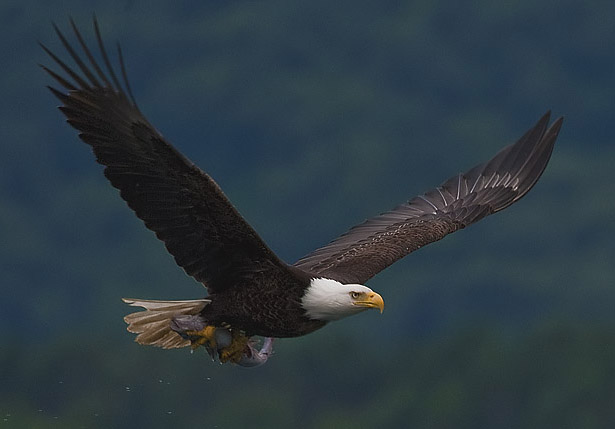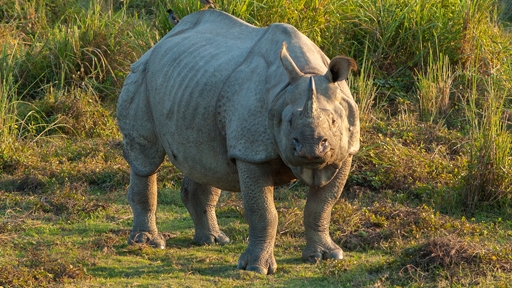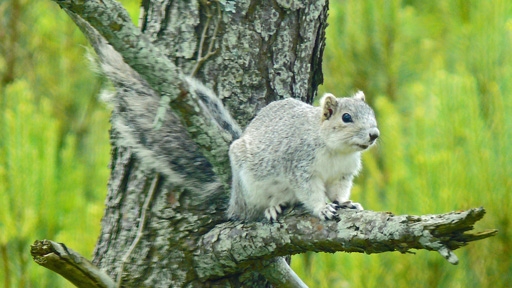
Humans have destroyed countless wildlife populations; overhunting, habitat encroachment, and farming are just a few of the ways we’ve brought species to the brink of extinction. But there is hope.
Conservation efforts to save these animals do work when enough of us come together to help. Restore your faith in humanity by joining us for some of the best “back from the brink” success stories of our time, starting with the:
Indian Rhino
 Image: Yathin S Krishnappa
Image: Yathin S Krishnappa
This incredible species once thrived along the entire stretch of the Northern portion of the Indian subcontinent (WWF). However, excessive hunting and agricultural development reduced their range to only 10 fragmented sites in northern India and southern Nepal.
By 1975, only 600 individuals of this species remained. However, conservation measures — such as improving habitat areas and reducing poaching — have led to an increase to an estimated 3,555 in 2015.
This increase is promising, but the species remains at threat. IUCN Red List writes, “The species is inherently at risk because over 70% of its population occurs at a single site, Kaziranga National Park. This area, is subject to poaching and tensions with the surrounding high human population due to human-wildlife conflicts.”
Trumpeter Swan
 Image: US Army Corps of Engineers
Image: US Army Corps of Engineers
The largest native waterfowl species in North America was nearly wiped out of the continental United States. This giant bird, with a wingspan of up to 10 feet, was overharvested for its feathers, skins and meat.
By 1933, less than 70 trumpeter swans were known to exist in one fragmented population within Yellowstone National Park. However, an aerial survey discovered a large Pacific population of several thousand around Alaska’s Copper River. By reintroducing these birds into the struggling Yellowstone population, wildlife agencies were able to boost the North American wild population up to 46,000 by 2010.
Bald Eagle
 Image: Austrian Whitewater Exploration
Image: Austrian Whitewater Exploration
The bald eagle is well-known as the national bird of the United States, however it has not always been treated as such. Widespread use of DDT, a highly toxic pesticide, nearly wiped the species off the face of the planet.
Data from the US Fish & Wildlife Service (USFWS) showed that in 1963, there were only 487 breeding pairs; In 2006, that number had climbed to nearly 5,000. This is a direct result of the ban on DDT as well as extensive habitat restoration efforts.
West Indian Manatee
Manatees were hunted well into the 1900’s, a practice that nearly brought the species to the point of no return. USFWS reported that in 1991, there were only 1,267 individuals remaining; Now, there are nearly 6,300 — a 500% increase.
Experts attribute this success to retrofitted water control structures, artificial warm water sources (manatees are very sensitive to temperature changes), and speed limits for boaters in areas populated by manatees.
Unfortunately, manatees still face threats from changes in water temperatures and are commonly killed by speeding boaters are they rest at the surface.
Tiger
 Image: Keven Law
Image: Keven Law
Wild tigers have a long way to go, but recent population estimates are promising.
Data from WWF and Global Tiger Forum showed that in 2010, the tiger population was around 3,200; Now, in 2016, the number has jumped to 3,890.
Tigers face the constant threats of poaching and habitat loss. They were once native to 23 countries in Asia, but are now found in only 11.
Delmarva Peninsula Fox Squirrel
 Image: U.S. Fish and Wildlife Service Headquarters
Image: U.S. Fish and Wildlife Service Headquarters
Thanks to extensive habitat protection and the efforts of wildlife experts and landowners alike, this species has been brought back from the brink of extinction.
When the Delmarva’s squirrels’ forest habitat shrank by 90% in the mid-20th century because of logging and development, their populations plummeted as a result. In 1979, a plan was put into place to protect their valuable habitat and to reintroduce them into areas where they had historically been successful. Today, 20,000 squirrels inhabit the Delmarva peninsula (an area on the East Coast, including Maryland, Delaware and Virginia).
American Alligator
Hunting and habitat loss had all but decimated the American Alligator, which led to the species endangered listing in 1967. Protection from USFWS and state wildlife agencies in the southern United States allowed groups in sparsely populated areas to recover.
Conservation efforts paid off, and the alligators were removed from the endangered species list in 1987. Populations are now stable; in fact, the species is plentiful enough that individuals are now harvested in many southern US states for their skins and meat.






